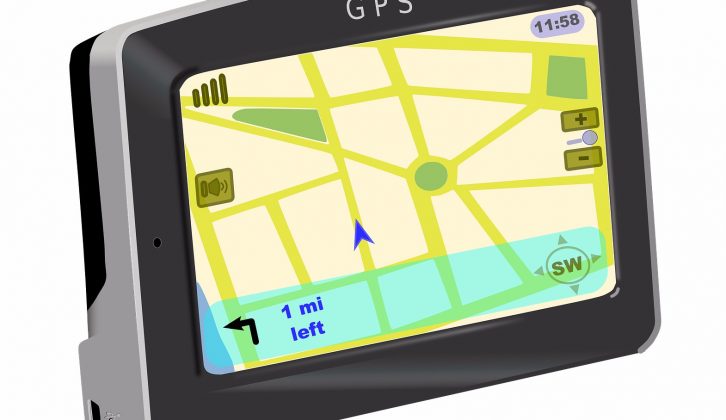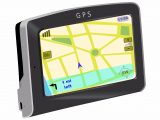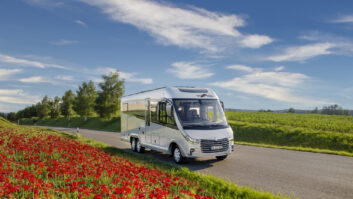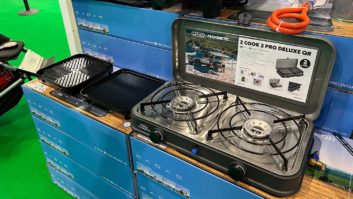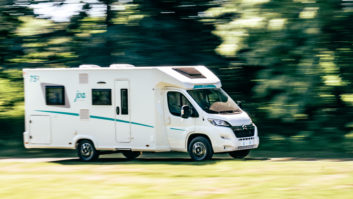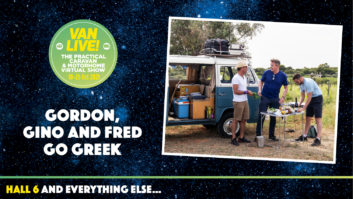Not so long ago, driving was a pretty basic affair, with few driver aids (unless you owned a very upmarket car) – and even more so when it came to light commercial vehicles or vans.
These were very much the vanilla variety of motoring, with fewer frills and often lacking creature comforts – and power!
Most vans and therefore motorhomes had detuned engines for some reason, especially when you consider that they’d be pulling heavier loads than cars with the same powerplant.
Thankfully this has changed, and vans now have more driver aids as standard, or they can be retrofitted fairly economically.
The sat-nav revolution
Satellite-navigation systems are one aid that has transformed travelling by motor vehicle – and maybe saved a few arguments on tour!
When they first became available, they were almost all expensive, built-in units – portable systems were limited by their battery and memory capacity.
Nowadays they are available at ever lower prices, with longer battery life and bigger memory, but there are still good reasons to opt for a built-in unit.
They’re powered by the vehicle’s 12V circuits, so there’s no limit to the operating time and you don’t have to plug them in.
They also generally have a connection to a road speed signal, allowing accurate tracking once calibrated, even without GPS signals.
In-’van entertainment
I’ve just fitted a new entertainment head unit in the Duchess (our home-converted camper).
I opted for a Pioneer double DIN head unit with 6.5” fixed screen, FM/DAB radio/CD/DVD player/Bluetooth (for hands-free mobile use and audio playback from compatible devices)/USB for media playback, and a built-in sat-nav system.
This is not a cheap option, but it does provide everything we need in one neat unit, plus excellent sound quality and digital radio reception.
What about cruise control?
Cruise control is another driver aid that is now widely available in motorhomes, and I am often asked if it will improve a vehicle’s fuel consumption.
My answer is almost always a definite maybe.
Why? Well, because fuel consumption has so many variables, not least of which is the wind resistance of the vehicle, which is largely defined by its frontal area.
The one other major factor affecting fuel consumption is the driver’s right foot, and this is where cruise control can help.
Modern vehicles are so much more powerful and so much quieter that it is all too easy for the speed to creep up – then you realise and back off to the speed you want.
After a while, you notice your speed has crept up and you back off again.
Break the cycle
This cycle is where cruise control can help with fuel consumption, because it will maintain a stable speed and eliminate this accelerate, decelerate cycle.
Another area where cruise control can save you money is with speed limits.
It can sometimes be tricky to keep your speed consistently below the limit while looking out for road signs, traffic, pedestrians, speed cameras and so on.
Engage your cruise control at just under the limit and you don’t need to worry about your speed (or your driving licence).
The real benefits to the driver are increased comfort and a more relaxed journey and that, to me at least, is worth having – especially when you are enjoying your motorhome holidays!
Let’s talk torque
Motorhome base vehicles are becoming ever more powerful – the latest generation Euro 6-rated 2.3 Fiat Ducato engines are now available with up to 180bhp.
However, bhp is not the best measure of an engine’s performance. Torque (turning force) is far more important, and particularly torque at lower engine speeds.
The new 180bhp unit gives 400Nm (295lb ft) of torque at just 1800rpm, exactly what we need to pull our accommodation around.
With the advent of electronic control for diesel injection, a new industry has sprung up in the form of remapping and tuning boxes. Both achieve largely the same results, but via different means.
The injection parameters for the engine are stored in a numerical array known as a map, allowing the ECU to apply the correct level of fuelling for whatever load and speed it is running at.
What is remapping?
Remapping involves altering the injection durations and timings to enable the engine to run more efficiently, producing more torque yet consuming less fuel.
A tuning box achieves similar results, but usually in a much simpler manner.
Most tuning boxes connect in between the ECU and the fuel rail pressure sensor, so only one parameter can be altered: fuel pressure.
They work by altering the rail pressure reported to the ECU: if it sees a lower pressure, it will increase it to the level set in the map.
The reality is, the rail pressure is higher than the map really calls for, so more fuel is injected.
I’ve always been wary of such devices, but as they are now so cheap, I’ve fitted one to the Duchess.
It is too early to say if it has made a difference, but it appears to have improved acceleration from low speeds and, if driven sensibly, fuel consumption.
Watch this space.
A keen motorcaravanner, Practical Motorhome’s technical expert Diamond Dave runs his own leisure vehicle workshop. Find out more at Dave Newell Leisure Vehicle Services.
The real benefits are increased comfort and a more relaxed journey
